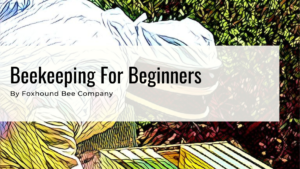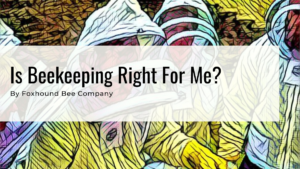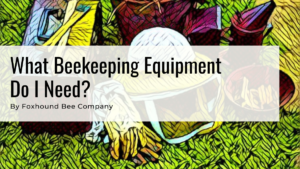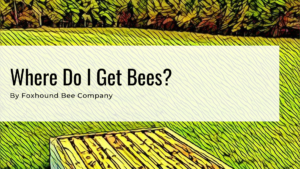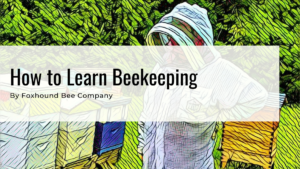

Starting a beehive and taking care of it is a lot of fun. From unpacking your new beekeeping suit to pouring (yes, pouring) your new bees into your hive, it’s all exciting.
Beekeeping can be challenging, and we will talk about that later, but it is the most rewarding hobby I’ve ever taken part in. If your goal is to harvest lots of honey or if it is simply just providing a place for honey bees to flourish, taking care of honeybees has something to offer you.
Beekeeping for beginners, however, is unlike some other hobbies where you can jump into it blindly; beekeeping requires some basic education to make sure you get off to the right start.
This knowledge will ensure a better experience for you. Your bees and you are in the right place to learn the basics without being overwhelmed.
Table of Contents
1. The Three Types Of Honeybees You See In A Hive
- 3.1 BEEKEEPING 101
4. What Beekeeping Equipment Do I Need?
5. When Do I Start Beekeeping?
6. Beekeeping Throughout The Year
- 6.1 Beekeeping In The Spring
- 6.2 Beekeeping In The Summer
- 6.3 Beekeeping In The Fall
- 6.4 Beekeeping In The Winter
7. What About Harvesting Honey?
Starting a beehive and taking care of it is a lot of fun. From unpacking your new beekeeping suit to pouring (yes, pouring) your new bees into your hive, it’s all exciting.
Beekeeping can be challenging, and we will talk about that later, but it is the most rewarding hobby I’ve ever taken part in. If your goal is to harvest lots of honey or if it is simply just providing a place for honey bees to flourish, taking care of honeybees has something to offer you.
Beekeeping for beginners, however, is unlike some other hobbies where you can jump into it blindly; beekeeping requires some basic education to make sure you get off to the right start.
This knowledge will ensure a better experience for you. Your bees and you are in the right place to learn the basics without being overwhelmed.
Table of Contents
1. The Three Types Of Honeybees You See In A Hive
- 3.1 BEEKEEPING 101
4. What Beekeeping Equipment Do I Need?
5. When Do I Start Beekeeping?
6. Beekeeping Throughout The Year
- 6.1 Beekeeping In The Spring
- 6.2 Beekeeping In The Summer
- 6.3 Beekeeping In The Fall
- 6.4 Beekeeping In The Winter
7. What About Harvesting Honey?
The Three Types Of Honeybees You See In A Hive
The Three Types Of Honeybees You See In A Hive
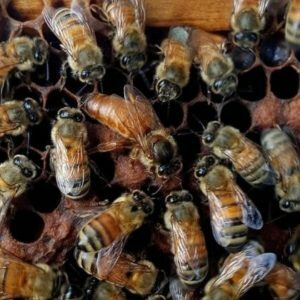
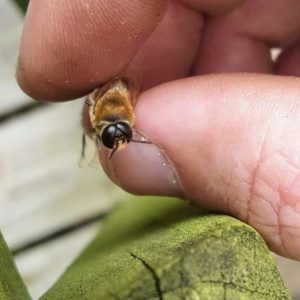
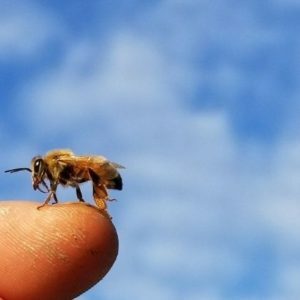
Will I Get Stung?
Will I Get Stung?
So yes. It will happen and you get better at “dealing” with it. Getting stung is just part of it, and it happens occasionally but not every time you open the hive. It should actually happen rarely. Not all bee stings are created equal, which is something that I didn’t realize before getting my own bees. Sometimes the bees really get their stinger in you with venom, and other times it’s just a tiny scrape of the stinger.
Oddly enough, a lot of my stings happen when I’m in a rush and can’t predict when I’m more or less likely to get stung. Like I mentioned before, it’s better to work with the bees than against them.
So yes. It will happen and you get better at “dealing” with it. Getting stung is just part of it, and it happens occasionally but not every time you open the hive. It should actually happen rarely. Not all bee stings are created equal, which is something that I didn’t realize before getting my own bees. Sometimes the bees really get their stinger in you with venom, and other times it’s just a tiny scrape of the stinger.
Oddly enough, a lot of my stings happen when I’m in a rush and can’t predict when I’m more or less likely to get stung. Like I mentioned before, it’s better to work with the bees than against them.
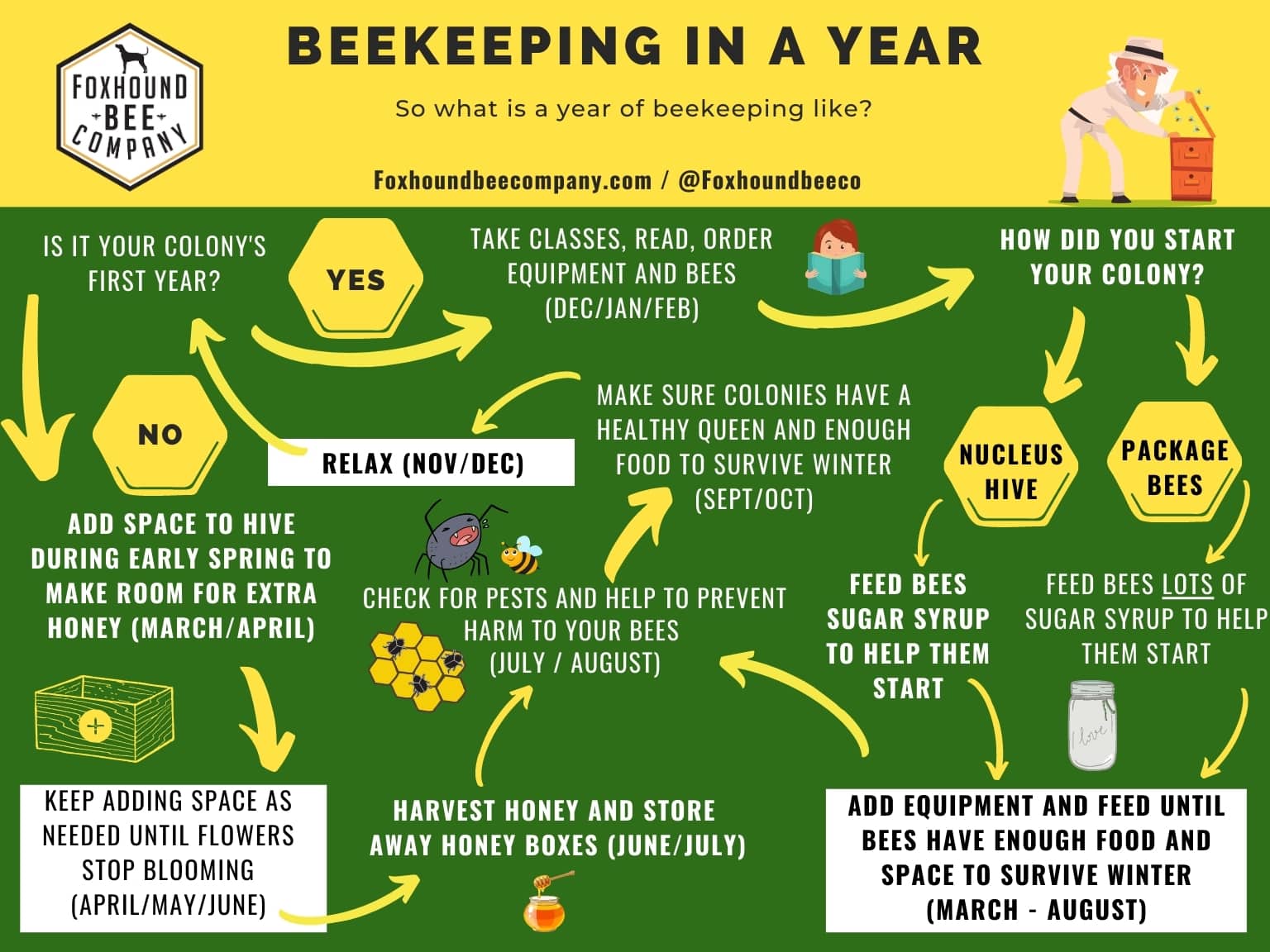
How Beekeeping Works
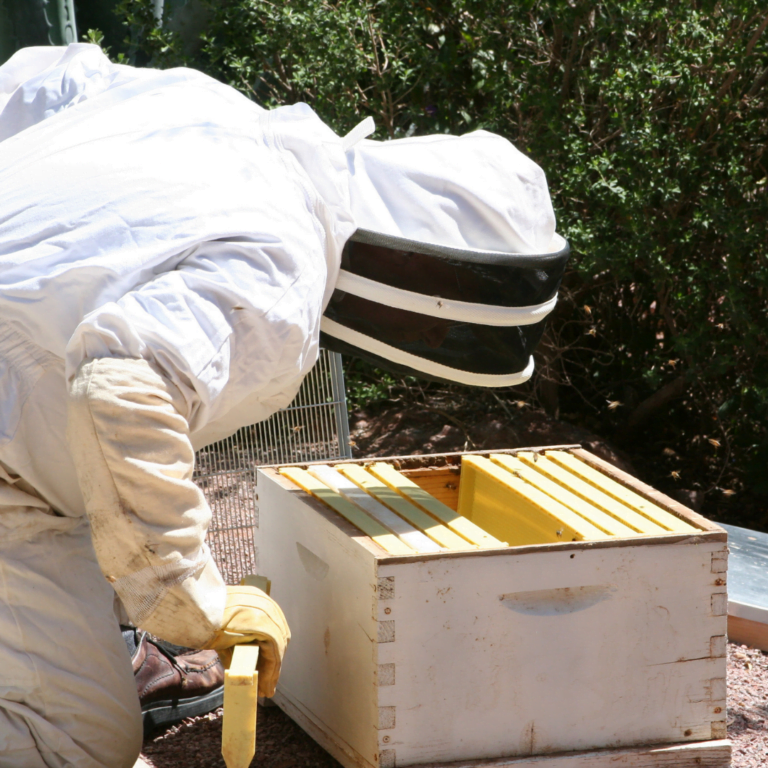
Beekeeping has been around a long time, but we aren’t going to talk about this history (because that’s boring), but it has certainly changed over the years.
What started as people raiding wild hives for honey has transformed into a highly managed process with removable frames and hives that are easy to transport.
Honeybees are still wild, even when under the care of a beekeeper, and can’t be domesticated like a horse or dog can. So the beekeeper has to work with the bees, which makes beekeeping as much of an art as a science.
How Beekeeping Works

Beekeeping has been around a long time, but we aren’t going to talk about this history (because that’s boring), but it has certainly changed over the years.
What started as people raiding wild hives for honey has transformed into a highly managed process with removable frames and hives that are easy to transport.
Honeybees are still wild, even when under the care of a beekeeper, and can’t be domesticated like a horse or dog can. So the beekeeper has to work with the bees, which makes beekeeping as much of an art as a science.
What Beekeepers Do
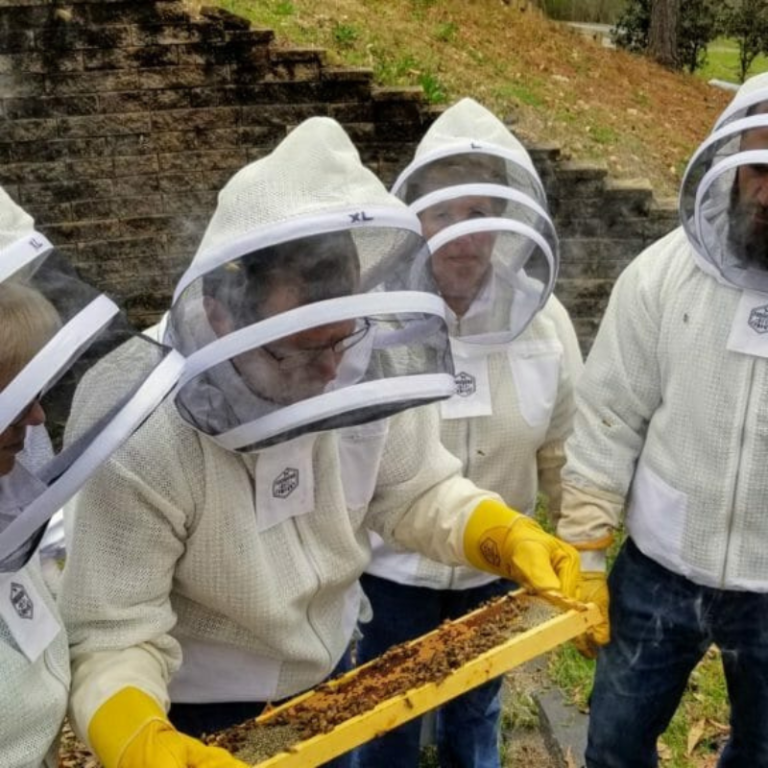
Beekeepers work inside this established structure and help to take care of their bees by providing what they need to survive and prosper. For most beekeepers, beekeeping involves checking in on the status of colonies and intervening as necessary.
This intervention can be adding or removing equipment, giving them sugar water, collecting swarms who exit their hives, and harvesting honey (can’t forget that one).
Taking care of bees is more like taking care of a garden than it is like taking care of chickens. A beehive doesn’t require daily tending and beekeepers don’t need to let their bees out and put them up each day.
They do require a careful eye to make sure they have what they need, like when a tomato plant needs more support to keep it from falling over.
And just like a garden, honeybees follow the seasons, with more work required during the spring and summer and much less during the winter.
What Beekeepers Do

Beekeepers work inside this established structure and help to take care of their bees by providing what they need to survive and prosper. For most beekeepers, beekeeping involves checking in on the status of colonies and intervening as necessary.
This intervention can be adding or removing equipment, giving them sugar water, collecting swarms who exit their hives, and harvesting honey (can’t forget that one).
Taking care of bees is more like taking care of a garden than it is like taking care of chickens. A beehive doesn’t require daily tending and beekeepers don’t need to let their bees out and put them up each day.
They do require a careful eye to make sure they have what they need, like when a tomato plant needs more support to keep it from falling over.
And just like a garden, honeybees follow the seasons, with more work required during the spring and summer and much less during the winter.
BEEKEEPING 101
BEEKEEPING 101
This post is part of our 5 part ultimate guide series on getting started in beekeeping and answering the most common questions we get from beekeepers who want to start their own hive. These are our most popular posts among people interested in becoming a beekeeper, so if this is you, be sure to check out all 5 posts.
This post is part of our 5 part ultimate guide series on getting started in beekeeping and answering the most common questions we get from beekeepers who want to start their own hive. These are our most popular posts among people interested in becoming a beekeeper, so if this is you, be sure to check out all 5 posts.
What Beekeeping Equipment Do I Need?
What Beekeeping Equipment Do I Need?
This is one of the most popular questions we are asked because it can be confusing. Here is the good news: you don’t need all of it. Here is some more good news: you don’t need it right now. We sell various equipment and it’s our bread and butter, but right now, the specifics don’t really matter. Here is the short list of what you would need so tuck it in the back of your mind.
This is one of the most popular questions we are asked because it can be confusing. Here is the good news: you don’t need all of it. Here is some more good news: you don’t need it right now. We sell various equipment and it’s our bread and butter, but right now, the specifics don’t really matter. Here is the short list of what you would need so tuck it in the back of your mind.
- 1. Protective Gear – Beekeeping Suit or Jacket and Gloves
- 2. Hive Tool – For prying beekeeping equipment apart
- 3. Smoker – Because you look cool (and also it’s essential for opening up a hive)
- 4. Beehive – Lot’s of options here, more on that later
Of course, you probably will need more than this, but these really are the essentials. There are way, way more products you don’t need than you actually do.
Of course, you probably will need more than this, but these really are the essentials. There are way, way more products you don’t need than you actually do.
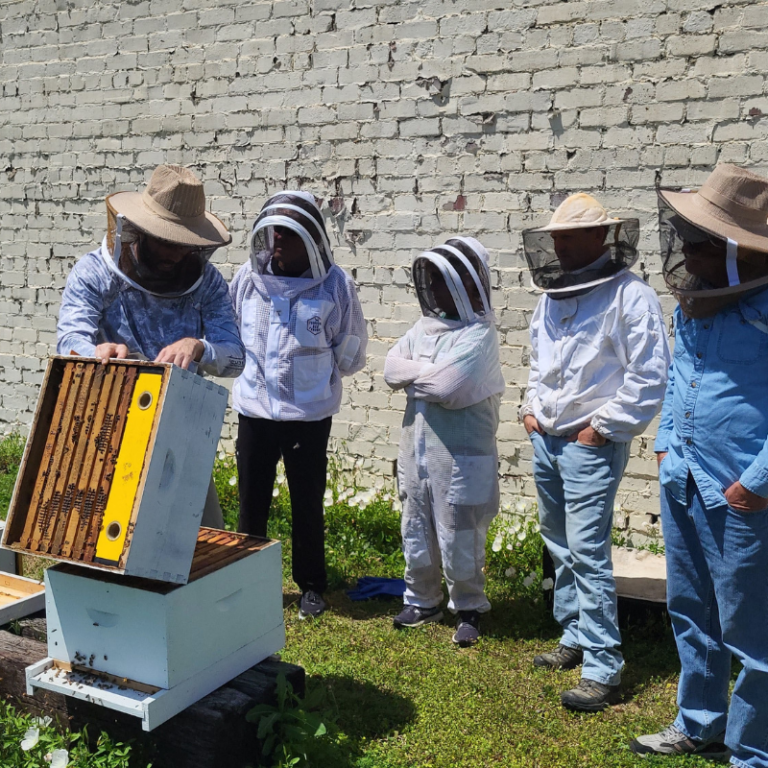
I’m an honest teacher and don’t want to pull punches, so I’ll be real. Successfully taking care of honeybees can be difficult at times. They aren’t exactly a pet that can provide food and water and expect to be fine.
Beekeepers can do everything right, and sometimes it just doesn’t work out. There are pests and issues that affect bees that are completely out of your control that you just have to learn to workaround.
The benefits of being a beekeeper, however, outweigh the negatives. The experience of opening a hive up for the first time and tasting honey from your own hive is unlike any other.
Regardless of your beekeeping goals, it’s important to be prepared to keep bees and understand what is involved.

I’m an honest teacher and don’t want to pull punches, so I’ll be real. Successfully taking care of honeybees can be difficult at times. They aren’t exactly a pet that can provide food and water and expect to be fine.
Beekeepers can do everything right, and sometimes it just doesn’t work out. There are pests and issues that affect bees that are completely out of your control that you just have to learn to workaround.
The benefits of being a beekeeper, however, outweigh the negatives. The experience of opening a hive up for the first time and tasting honey from your own hive is unlike any other.
Regardless of your beekeeping goals, it’s important to be prepared to keep bees and understand what is involved.
When Do I Start Beekeeping?
When Do I Start Beekeeping?
Most beekeepers actually start their hives during March, April, and May. Those are the ideal months to start a beehive for most of the US. Starting a hive early in the year is best because it gives the bees enough time to build up the resources they need to survive the winter. The later in the year you start a hive, the harder it will be for the bees to survive the winter. This is because the bees need to store enough honey prior to winter in order to eat during the winter.
There are always exceptions, like in sub-tropical areas where there isn’t much of a winter to consider. In these areas, the bees are able to be supported and fed year-round until established. You aren’t able to do this in much of the US, which is why it’s best to start early in the year.
Most beekeepers actually start their hives during March, April, and May. Those are the ideal months to start a beehive for most of the US. Starting a hive early in the year is best because it gives the bees enough time to build up the resources they need to survive the winter. The later in the year you start a hive, the harder it will be for the bees to survive the winter. This is because the bees need to store enough honey prior to winter in order to eat during the winter.
There are always exceptions, like in sub-tropical areas where there isn’t much of a winter to consider. In these areas, the bees are able to be supported and fed year-round until established. You aren’t able to do this in much of the US, which is why it’s best to start early in the year.
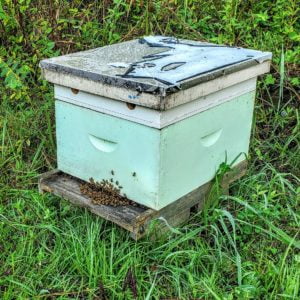
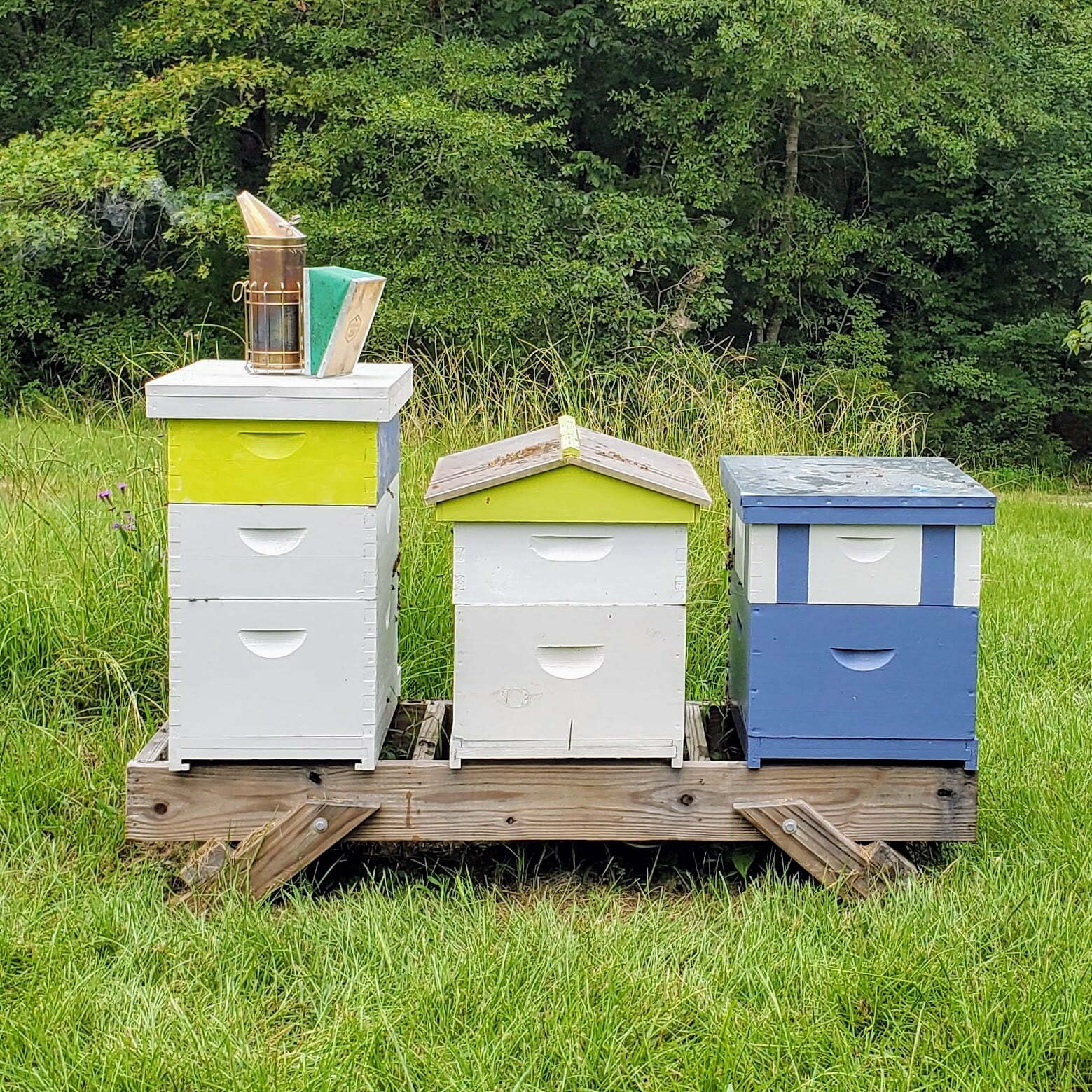
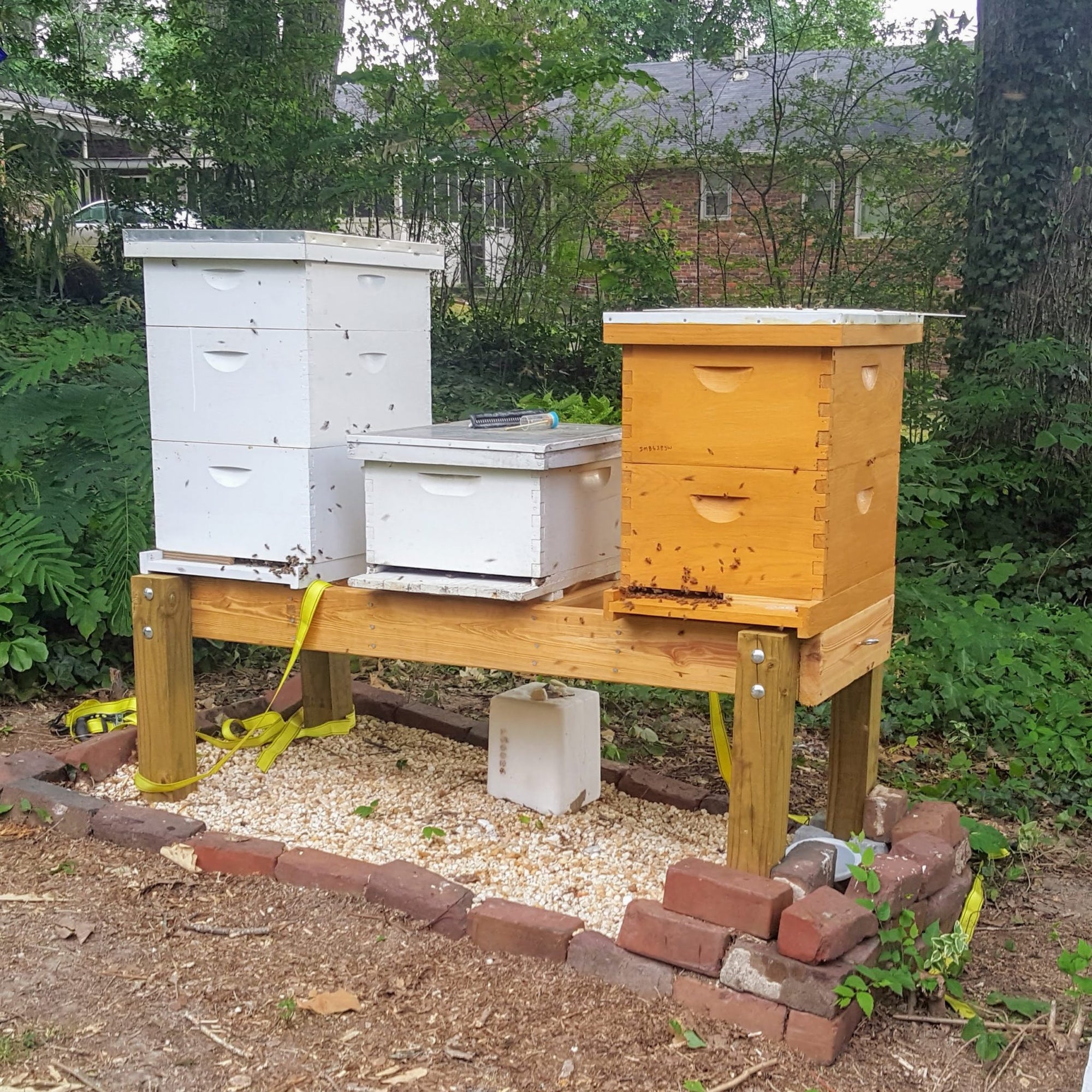
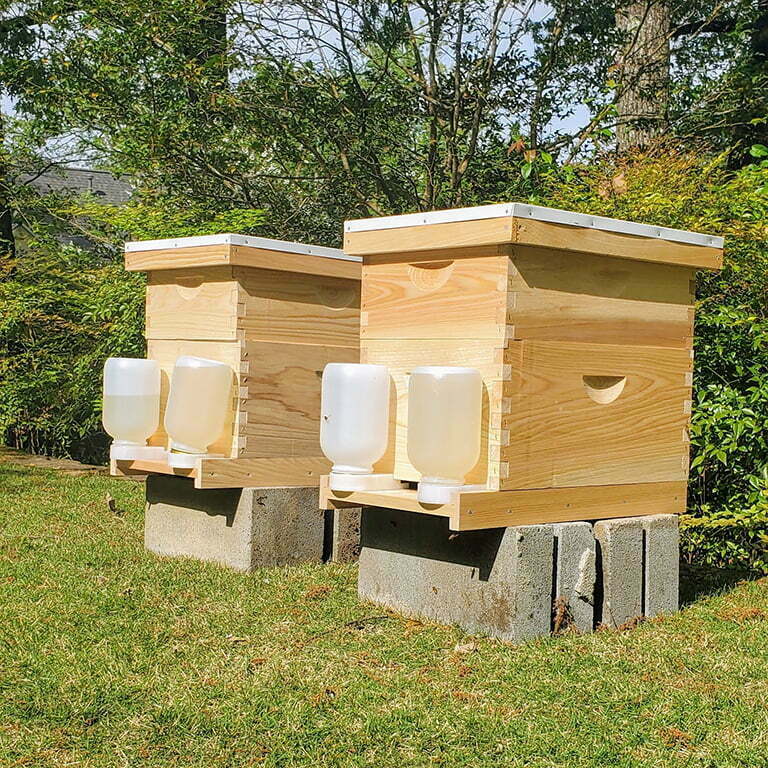
Though starting early in the year is best, preparation starts months before. Finding the right spot for the hives, taking classes, buying equipment, assembling equipment, etc… are all important activities that start before you ever start the hive.
When we started our hives, we found it very helpful to look at pictures of other people’s hives to see how they set them up. Keep in mind that the way a beekeeper sets up their equipment will change according to the time of the year and where they live. You can certainly look at their hive stands and all the different ways to paint the boxes.
Though starting early in the year is best, preparation starts months before. Finding the right spot for the hives, taking classes, buying equipment, assembling equipment, etc… are all important activities that start before you ever start the hive.
When we started our hives, we found it very helpful to look at pictures of other people’s hives to see how they set them up. Keep in mind that the way a beekeeper sets up their equipment will change according to the time of the year and where they live. You can certainly look at their hive stands and all the different ways to paint the boxes.
What Do The Bees Need From Me?
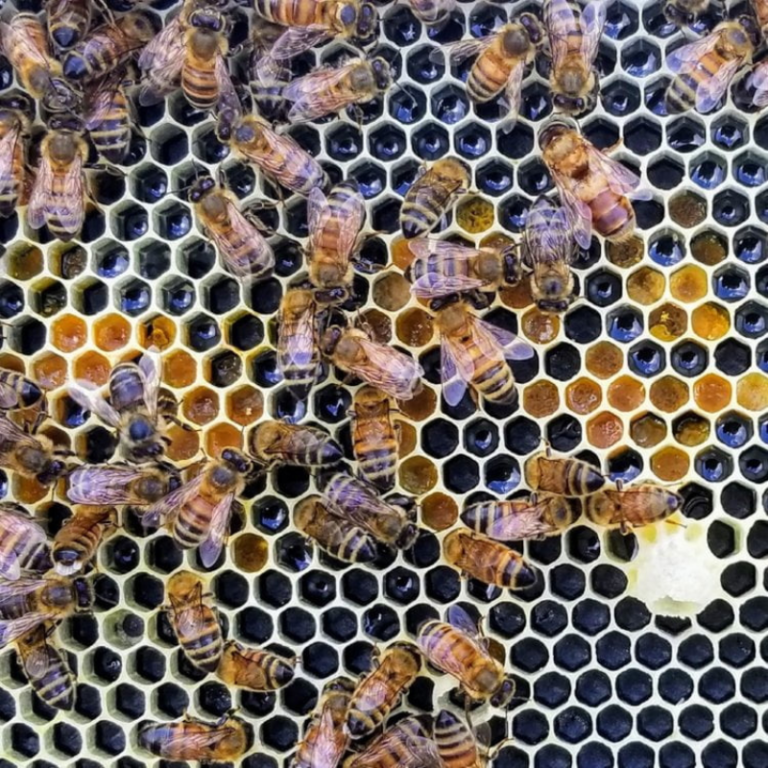
You might wonder what you actually need to do with the bees. It’s pretty common to think you just put bees in the box, let them do their thing, and come back later for the honey. Unfortunately, it’s not quite like that.
Some of the regular activities beekeepers do with their bees is to open the hive and look at the progress inside the hive. This means checking the queen and her egg-laying, noticing how much pollen and honey they are storing, reducing the impact of pests, and adding or removing equipment.
Honeybees are self-sufficient day-to-day, but usually need tending every 1-3 weeks during the spring and summer. Fortunately, colonies and beekeepers both gain momentum as time goes on and build on previous years. So year 2 for the beekeeper and their bees is a little easier than the 1st year.
What Do The Bees Need From Me?

You might wonder what you actually need to do with the bees. It’s pretty common to think you just put bees in the box, let them do their thing, and come back later for the honey. Unfortunately, it’s not quite like that.
Some of the regular activities beekeepers do with their bees is to open the hive and look at the progress inside the hive. This means checking the queen and her egg-laying, noticing how much pollen and honey they are storing, reducing the impact of pests, and adding or removing equipment.
Honeybees are self-sufficient day-to-day, but usually need tending every 1-3 weeks during the spring and summer. Fortunately, colonies and beekeepers both gain momentum as time goes on and build on previous years. So year 2 for the beekeeper and their bees is a little easier than the 1st year.
Beekeeping Throughout The Year
Beekeeping Throughout The Year
When I got started beekeeping, I didn’t quite understand what’s involved during the whole year. Just in case you are in the same situation I was, I’ll make this a little easier for you. Beekeeping is very seasonal, and this is the part that makes it easier to take care of your bees. Knowing what happens throughout the year helps beekeepers prepare for what the bees want to do, instead of reacting to what they have done.
The good thing is about seasons is that they happen every single year. Learning how bees respond to the seasons makes taking care of them so much easier.
When I got started beekeeping, I didn’t quite understand what’s involved during the whole year. Just in case you are in the same situation I was, I’ll make this a little easier for you. Beekeeping is very seasonal, and this is the part that makes it easier to take care of your bees. Knowing what happens throughout the year helps beekeepers prepare for what the bees want to do, instead of reacting to what they have done.
The good thing is about seasons is that they happen every single year. Learning how bees respond to the seasons makes taking care of them so much easier.
Beekeeping In The Spring
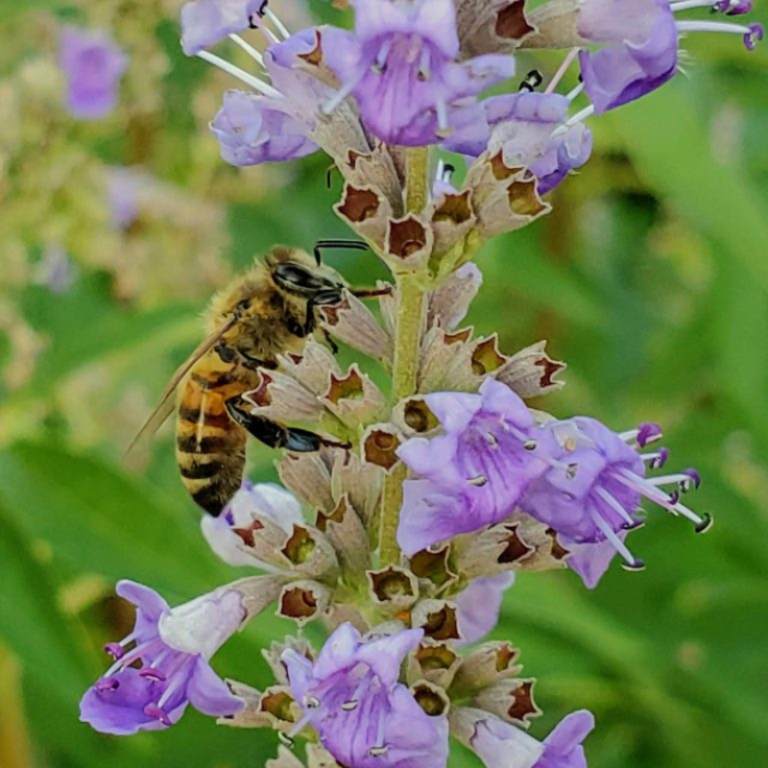
During the spring, the populations in a hive explode in preparation for the large number of flowers that bloom during the spring. While these flowers are blooming, the bees are trying to make the most of it and store most of their honey during this period.
For the beekeepers, this is the time of the year where the beekeeper does their best to keep up with them. This is also the ideal time of the year to start a new beehive and the time of the year most beehives are for sale.
Beekeeping In The Summer​
During the summer, the temperature is so hot that many flowers stop producing nectar and shift their attention to just surviving the heat. Because of this, bees do not have as much to forage on. Bees shift their attention to keeping the inside of the hive from overheating by fanning the entrance with their wings and bringing water back into the hive.
The summer is also a time where there are a couple of pests increase in population and can become a nuisance to the bees. Something cool that bees do during the summer is to steal from each other. Strong hives will actually invade weaker colonies and steal their honey.
Beekeeping In The Spring

During the spring, the populations in a hive explode in preparation for the large number of flowers that bloom during the spring. While these flowers are blooming, the bees are trying to make the most of it and store most of their honey during this period.
For the beekeepers, this is the time of the year where the beekeeper does their best to keep up with them. This is also the ideal time of the year to start a new beehive and the time of the year most beehives are for sale.
Beekeeping In The Summer​
During the summer, the temperature is so hot that many flowers stop producing nectar and shift their attention to just surviving the heat. Because of this, bees do not have as much to forage on. Bees shift their attention to keeping the inside of the hive from overheating by fanning the entrance with their wings and bringing water back into the hive.
The summer is also a time where there are a couple of pests increase in population and can become a nuisance to the bees. Something cool that bees do during the summer is to steal from each other. Strong hives will actually invade weaker colonies and steal their honey.
Beekeeping In The Fall
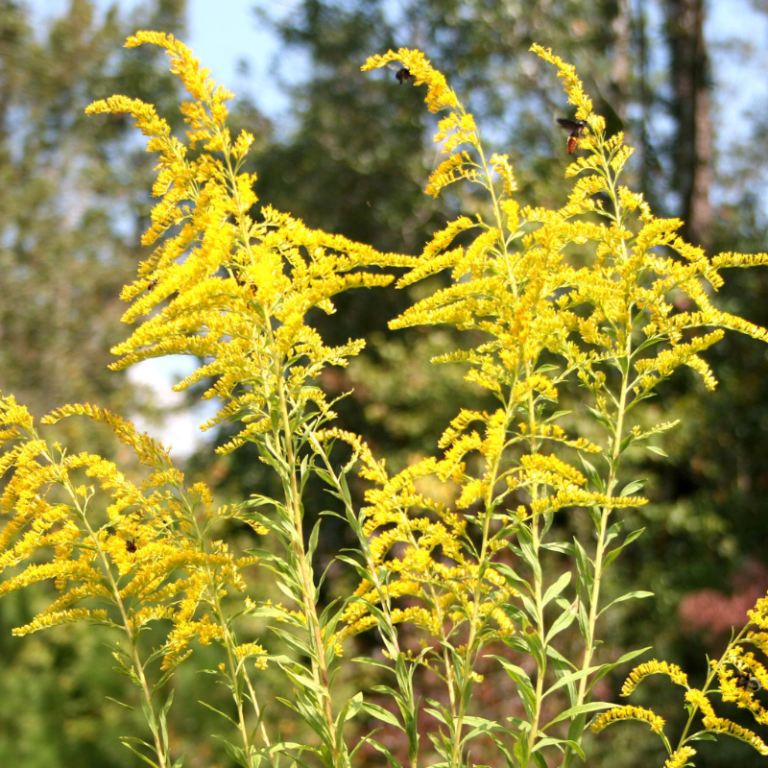
During the fall, beekeeping responsibilities and hive populations are on the decline, which is completely normal. Again, this is typical for most of the United States, but sub-tropical areas don’t wind down as much as the colder climates.
During the fall, beekeeping activities typically focus on getting hives ready for winter. This typically involves minimizing extra space inside the hive and feeding syrup to the bees to make sure they don’t starve over the winter.
Beekeeping In The Fall

During the fall, beekeeping responsibilities and hive populations are on the decline, which is completely normal. Again, this is typical for most of the United States, but sub-tropical areas don’t wind down as much as the colder climates.
During the fall, beekeeping activities typically focus on getting hives ready for winter. This typically involves minimizing extra space inside the hive and feeding syrup to the bees to make sure they don’t starve over the winter.
Beekeeping In The Winter
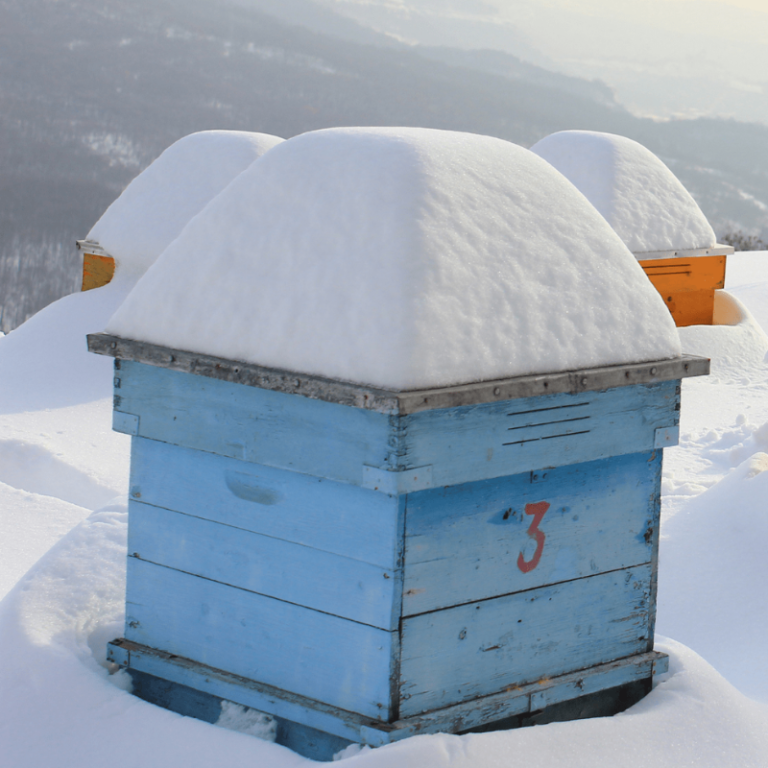
Ahhh winter… The off-season for most beekeepers. This is typically when you sit back and enjoy the time off with few responsibilities.
Some parts of the country don’t quite have a winter. If you live in Vermont, you probably don’t think anyone south of you has a winter and laugh at us southerners when we talk about being cold.
In terms of beekeeping, around 50°F is the cutoff for bees. Anything below that and the bees are staying inside the hive and not foraging. Anything above that and they will work all day long.
So if you live in a part of the country that is above 50°F all winter long, it’s not much of a winter for your bees. If you live in Vermont, you better get your bees ready for winter before it gets too cold.
Beekeeping In The Winter

Ahhh winter… The off-season for most beekeepers. This is typically when you sit back and enjoy the time off with few responsibilities.
Some parts of the country don’t quite have a winter. If you live in Vermont, you probably don’t think anyone south of you has a winter and laugh at us southerners when we talk about being cold.
In terms of beekeeping, around 50°F is the cutoff for bees. Anything below that and the bees are staying inside the hive and not foraging. Anything above that and they will work all day long.
So if you live in a part of the country that is above 50°F all winter long, it’s not much of a winter for your bees. If you live in Vermont, you better get your bees ready for winter before it gets too cold.
What About Harvesting Honey?
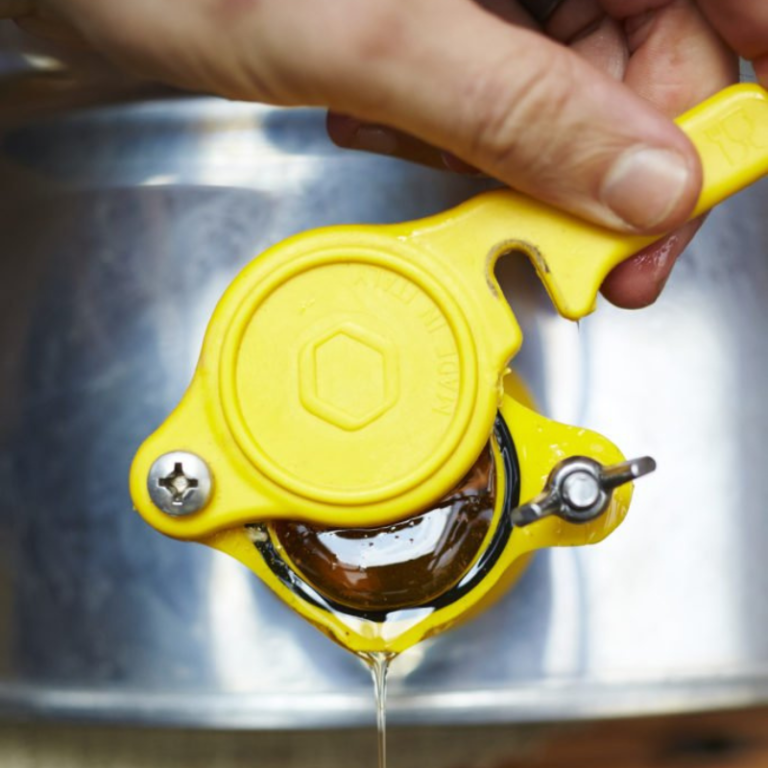
Having a taste of honey from your very first honey harvest is a moment that won’t be forgotten. It’s pretty incredible seeing the end product of all that work, golden, sticky, delicious; there is no honey-like your honey and it’s something to look forward to.
When we teach classes, we try to temper the student’s expectations for harvesting honey during their first year. We always say, “Don’t make any promises. As soon as you tell people you are going to keep bees, they want to buy a bottle of honey”. The more promises you make, the more pressure you put on you and your bees.
This isn’t because the bees don’t make any honey, but because they don’t make any extra honey. The bees work hard all spring and summer, foraging for nectar and building their comb.
First-year colonies typically have to start from scratch with all their comb building. Because of that, all the energy collected in the form of nectar is turned into comb. The good news is that the comb is reusable year after year.
So in your 2nd year, it’s a good idea to plan for a honey harvest. In the 3rd year, even more. Bees and beekeepers both gain momentum as the years go on.
What About Harvesting Honey?

Having a taste of honey from your very first honey harvest is a moment that won’t be forgotten. It’s pretty incredible seeing the end product of all that work, golden, sticky, delicious; there is no honey-like your honey and it’s something to look forward to.
When we teach classes, we try to temper the student’s expectations for harvesting honey during their first year. We always say, “Don’t make any promises. As soon as you tell people you are going to keep bees, they want to buy a bottle of honey”. The more promises you make, the more pressure you put on you and your bees.
This isn’t because the bees don’t make any honey, but because they don’t make any extra honey. The bees work hard all spring and summer, foraging for nectar and building their comb.
First-year colonies typically have to start from scratch with all their comb building. Because of that, all the energy collected in the form of nectar is turned into comb. The good news is that the comb is reusable year after year.
So in your 2nd year, it’s a good idea to plan for a honey harvest. In the 3rd year, even more. Bees and beekeepers both gain momentum as the years go on.
What Is The Worst Part Of Beekeeping?
What Is The Worst Part Of Beekeeping?
Without a doubt, the hardest part of beekeeping is walking up to a hive you thought was doing great only to find out there aren’t any bees in it anymore. There are several reasons this could happen and they are typically able to be prevented. But regardless, it’s tough to find out your colony didn’t survive.
Sometimes the bees die, and sometimes they decide to move somewhere else completely. Sometimes their hive is raided by another colony who wants to steal honey. There are lots of reasons for failure, but even with the occasional disappointments, it is still very rewarding to take care of your own hives.
Without a doubt, the hardest part of beekeeping is walking up to a hive you thought was doing great only to find out there aren’t any bees in it anymore. There are several reasons this could happen and they are typically able to be prevented. But regardless, it’s tough to find out your colony didn’t survive.
Sometimes the bees die, and sometimes they decide to move somewhere else completely. Sometimes their hive is raided by another colony who wants to steal honey. There are lots of reasons for failure, but even with the occasional disappointments, it is still very rewarding to take care of your own hives.
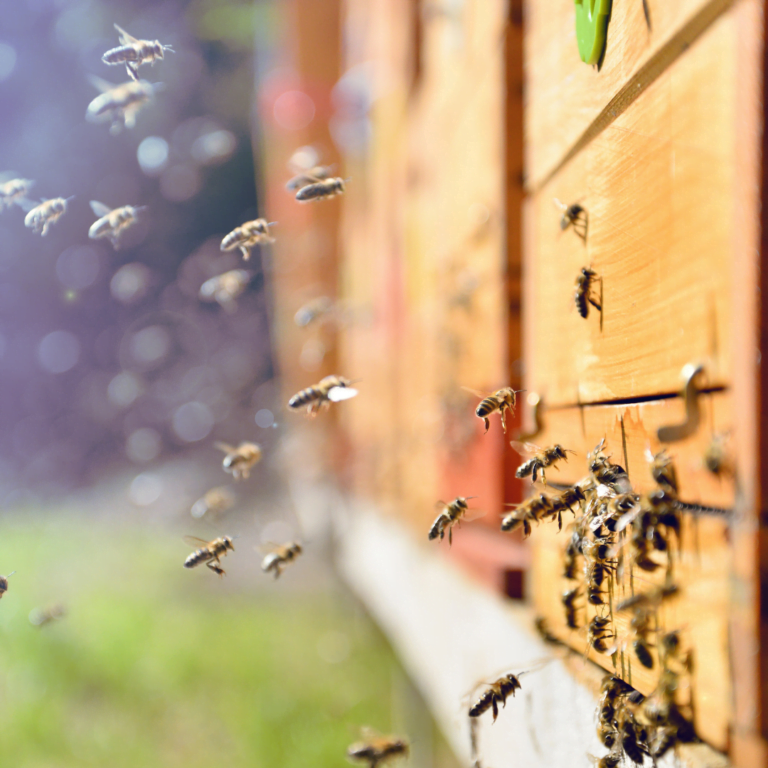
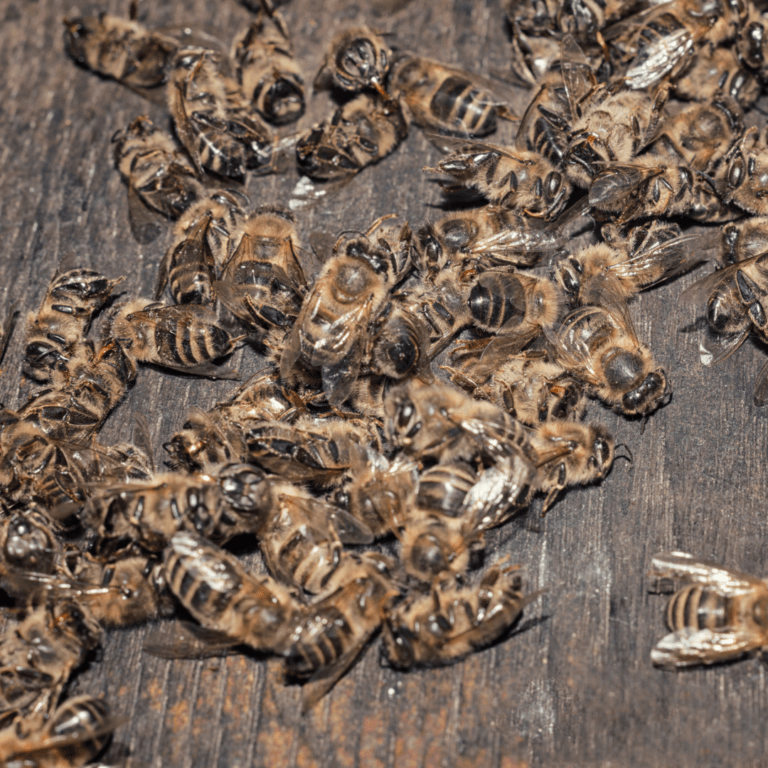
What Is The Best Part Of Beekeeping?
What Is The Best Part Of Beekeeping?
Beekeeping is incredibly rewarding and there are a lot of benefits to taking care of your own bees. The most common rewards you might think of are tasting your own honey, pollinating the garden, talking about it with friends, etc… For us, the best part of beekeeping is seeing first hand how incredible and industrious honeybees are.
Bees are able to feed themselves, build their home, reproduce and replace their own spent resources when needed. As their beekeeper, you get to see all these processes happen first hand, right in front of you.
Seeing your bees thrive is incredibly encouraging and knowing that you are doing your small part to contribute positively to the environment is worth a lot. Even if it isn’t your primary motive for taking care of bees, it is a fantastic side effect.
Beekeeping is incredibly rewarding and there are a lot of benefits to taking care of your own bees. The most common rewards you might think of are tasting your own honey, pollinating the garden, talking about it with friends, etc… For us, the best part of beekeeping is seeing first hand how incredible and industrious honeybees are.
Bees are able to feed themselves, build their home, reproduce and replace their own spent resources when needed. As their beekeeper, you get to see all these processes happen first hand, right in front of you.
Seeing your bees thrive is incredibly encouraging and knowing that you are doing your small part to contribute positively to the environment is worth a lot. Even if it isn’t your primary motive for taking care of bees, it is a fantastic side effect.


